The words “full moon” in many languages

It is said that there are more than 6,000 languages worldwide (this is hard to imagine) and it is a fascinating concept to think, there are probably as many words for “full moon”.
Here we begin our little journey to the full moon. A few words about the fascinating quest of the greater purpose, that includes the full moon circulating through our lives. In layman’s terms and not always scientific (astronomy experts – don’t look too closely!). We would like to wish you illuminating moments. Enjoy!


It is said that there are more than 6,000 languages worldwide (this is hard to imagine) and it is a fascinating concept to think, there are probably as many words for “full moon”.
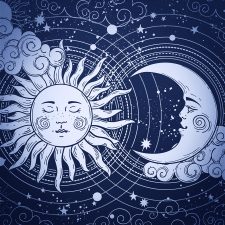
A full moon is when the Sun and the Moon are facing opposite, being in opposite direction from an Earth perspective.
This might feel astonishing if one imagines that the Moon is on one side, the Sun on the other and the Earth in between? Shouldn’t the Earth throw a shadow onto the Moon? Bingo – this is exactly what she does! But only when the Moon is exactly on the Earth orbit, the so called “ecliptic”. When this takes place, we speak of a lunar eclipse!

The Moon needs 27.33 days to circle around the Earth. Something that is also referred to as “sidereal time”. But because the Earth orbits the Sun, just like the Moon orbits the Earth, the Moon has to travel two further days in order to resume the same position to the Earth and Sun. This is then called the “sidereal time”. In order to determine the point of time of the reoccurring full moon, the sidereal time serves as basis.

We already know now that the moon month is mostly shorter than the calendar month, being on average approximately 29.5 days. If full moon falls on the first or second of a month, it is possible that another full moon occurs in the same month, for instance in July 2004:
Friday, 2 July 2004, 01:08:54 pm
Saturday, 31 July 2004, 08:05:06 pm
This event is also known as “blue moon”.

The answer is: “everywhere at the same time”. This refers to the so called Universal Time (UT) though, which is used for general astronomical events. We have already learnt that full moon is an astronomical event, where the moon, sun and the earth play a role by being in a specific position. So, full moon takes place at a specific time in the outer space. This point of time is specified by astronomers namely by the Universal Time.

There are multiple ways of approaching this question. If we look at it from a purely theoretical standpoint, we might be tempted to say that the full moon is infinitely short, since the phases of the moon are changing continuously. The moon is not yet quite full shortly before the full moon, and is already waning shortly afterwards.
However, there is a practical aspect that lets us quantify the full moon as a finite and measurable span of time: Since the Sun is significantly bigger than the Moon, its rays are able to reach just a little over half of the Moon’s surface. This means that the timespan in which the visible side of the Moon’s surface is irradiated (as seen from Earth) is longer than infinitely short.

Whether scientists, astrologers or esoterics, they agree on one thing: the moon influences earth and life on earth. For instance, it regulates the tides through its magnetism. Also continents feel the consequence of this magnetism and either raise or lower their position sometimes up to 26 cm.

In nature it is a known fact: for some animal species, mating takes place at full moon. However, the examples that can be found on this subject are rather simple. Full moon serves in some cases indirectly as the cause (for instance through the high water levels during the tides that the horseshoe crab uses to deposit its eggs) or also as the signal for both sexes of a species to begin at the exact same time to safeguard their future existence (a particular type of fly or also corals). It is understood that also wolves are led by full moon when it is time to mate.

… that people are looking for an argument at full moon or are especially happy …
… that if full moon is surrounded by a haze, a person dies …
… that you raise your hat three times to the moon (being a man) or you make a curtsey (being a woman), in order to protect yourself from misfortune until the next full moon …
… that whoever does not chink glasses with full moon at least once, does not deserve any happiness [Greek toast] …
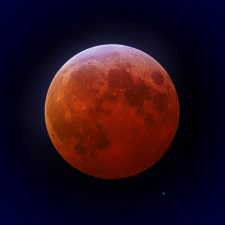
During a lunar eclipse, the Moon moves through the shadow of the Earth. Which means, that the Earth is positioned quite exactly between the Sun and Moon and casts its shadow onto the Moon. This is only possible at full moon and if some other requirements are met. Depending on whether the moon passes the partial or the core shadow of the Earth, we speak of a partial or total lunar eclipse.
Jellyfish are fascinating beings and although, nobody would actually like to come into contact with them, we are mesmerized by them and admire their shapes, colors and almost etheric bodies, which are floating through the water – like entities from another world. And lo behold, there is also one kind that the Moon lent his name to: the »moon jellyfish« (lat. aurelia aurita).
Also in various other languages, you can find the word »moon« in the name these jellyfish:

A hotel on the Moon – that sounds quite utopian if not absurd. Fact is, there are people thinking about colonising and inhabiting space or other celestial bodies, since man has been busy flying into space. And if we believe the statements of different companies that are planning hotels beyond the Earth, there has to be a great demand. This would actually be also necessary to make this project lucrative. Or is it merely the prestige and publicity, which are reaped by such an undertaking and hence would justify it?

We have already searched and found the word »full moon« in the Bible, but only in two places in the Old Testament (Psalm 81:3–4 and Proverb 7:18–20). This is surprising, because the Last Supper of Jesus and his disciples must have taken place during the full moon, and hence, should have been mentioned in the New Testament.
We have extended our research and have looked for the word »moon« in the Bible. Here too, most passages can be found in the Prophetic books and Psalms of the Old Testament. However, there are also two places in the New Testament in the Gospel of Luke and Mark.

That people connect and come together in the full moon light is not new and has always been this way. But what regularly occurred during the second half of the 18th century in Birmingham, Great Britain around full moon time, was an encounter of a special kind. The countries most brilliant and influential minds met back then (natural scientists, physicians, poets, theologians, philosophers, inventors and industrialists), within the scope of the, by Erasmus Darwin initiated »Lunar Society« in 1765.
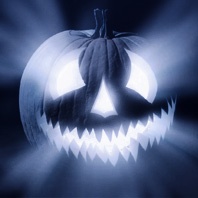
In 2020 the full moon will fall on a 31st October and a Halloween party can take place in the full moon light. The imagination of people fits this well apparently, because no matter where you look, the full moon can be seen in all portrayals of Halloween. In historical terms, there is no connection, however. Halloween is the evening before All Saints’ Day (originally: »All Hallows’ Eve«). The basic idea of this festival is the remembrance of saints and it is connected to the wish to drive out bad spirits. This is how the gruesome costumes came into play.

Who does not know the story of Peter Pan, the boy who does not want to grow up. It is already more than 100 years old (premiered as stage play in London in 1904) and has been adapted to countless screen versions. And next to all the imaginative characters, one encounters repeatedly one thing: the full moon.

They have probably never met in person, Frank Sinatra (1915–1998), the American singer and entertainer and Sergei Rachmaninoff (1873–1943), the Russian pianist and composer, although, mathematically speaking, it might have been possible. However, almost two generations lay between both musicians and stylistically they are worlds apart. But there is a meeting point indeed, that even has to do with the full moon.

Nena and her band belong to the most successful artists in German music history. With »99 Luftballons« from 1983, she made a name for herself internationally and also reached 2nd place in the US charts with the English version »99 red balloons« [*]. This has only been accomplished by very few German musicians.
In the song »Vollmond« [full moon], also from 1983, Nena sings about the silver Moon and describes the romantic longing and restlessness, which can capture us during a full moon:
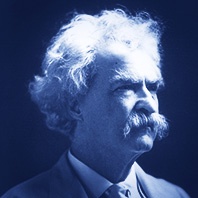
There is a famous quote by the American writer Mark Twain (1835–1910), taken from his satirical travel guide »A Tramp Abroad«, published in 1880: »Everyone is a moon, and has a dark side which he never shows to anybody.« He alludes to the astronomical fact that the Moon only turns one side towards the Earth, due to its synchronous rotation. The reverse side of the Moon remains hidden to us when observed from Earth.
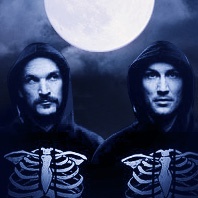
There are quite a few full moon songs, with Frank Sinatra’s »full moon and empty arms« leading the way, from 1945, which was inspired by Rachmaninoff’s piano concert No. 2 (you can hear this in the comparison). A newer example would be the »full moon song« by Peter Bradley Adams from 2011, or the song »full moon« by the British music duo The Black Ghosts (Theo Keating and Simon William Lord) from 2006, which achieved a high level of publicity in 2008 as the soundtrack of the movie »Twilight«. The song may have probably not been that successful, if the music supervisor Alexandra Patsavas hadn’t chosen it for the soundtrack.